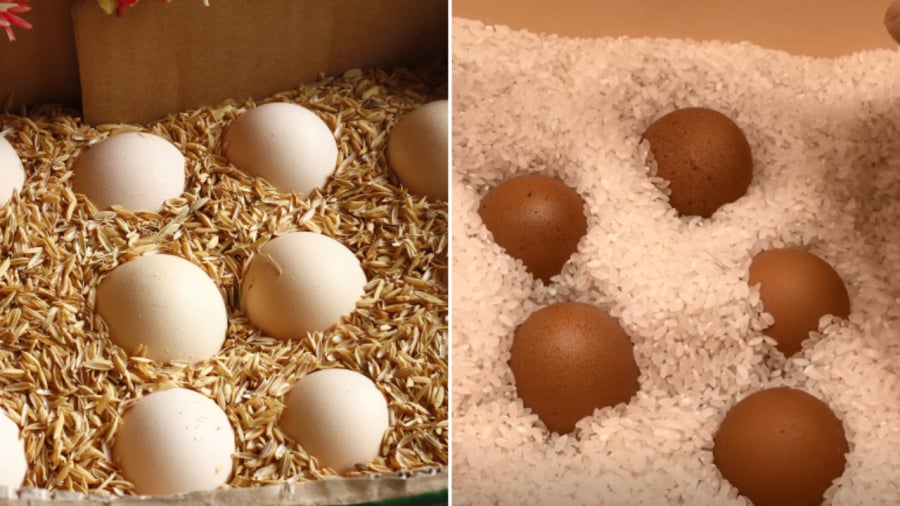Preserving Eggs: Natural Methods That Work
Using Rice Husk Ash
A traditional method for egg preservation involves rice husk ash. By layering eggs with dry, clean ash, air circulation is improved, bacteria growth is inhibited, and eggs remain fresh for extended periods.
Typically, one would spread a layer of husk at the bottom of a container, place eggs on top, and then cover them with another layer of husk. Repeat this process, ending with a thick layer of husk on top. Store the container in a cool, dry place, away from direct sunlight.
If rice husk is unavailable, sawdust or wood ash can be used instead, ensuring they are thoroughly dried before use.
Pairing Eggs with Grains and Legumes
Grains and legumes, such as soybeans, black beans, red beans, and corn, are excellent natural preservatives for eggs. Simply arrange the eggs alternately with these dry goods and store them in a cool, well-ventilated area.

Dry materials such as rice husk, sawdust, grains, and beans can effectively preserve eggs.
Tea Leaves to the Rescue
Dried tea leaves, whether from black tea or green tea, can be used similarly to rice husk ash. Alternating layers of eggs and tea leaves help maintain egg freshness for up to two months.
Sand, Rice Bran, and More
Sand and rice bran are other natural preservatives used in the past. Eggs are placed in a container and covered with a layer of dry sand or bran, similar to the rice husk method.
Salt to the Rescue
Salt is a well-known natural preservative and antibacterial agent. Burying eggs in dry salt will keep them fresh for several months.
Limewater Solution
Mix lime powder with clean water to create a 2-3% limewater solution. Allow the mixture to settle for a few days, then filter it to obtain clear limewater. Gently place eggs in a non-metallic container and pour in the limewater, ensuring the eggs are completely submerged. This method can preserve eggs for up to six months.
Another approach is to soak eggs in a 5% limewater solution, then remove and air-dry them before storing in a cool, dry place for 3-4 months.
Handling and Storage Tips
When arranging eggs, ensure the broader end is facing up, keeping the yolk stable and preventing it from sticking directly to the shell.
The Ultimate Guide to Preserving Pumpkin: Keep Your Giant Squash Fresh for a Month
With just one simple step, you can keep your leftover squash fresh for up to a month. Yes, you read that right! Say goodbye to wasted produce and hello to convenient, long-lasting freshness. This game-changing hack will revolutionize the way you store your squash, ensuring it stays crisp and tasty for weeks on end.



































